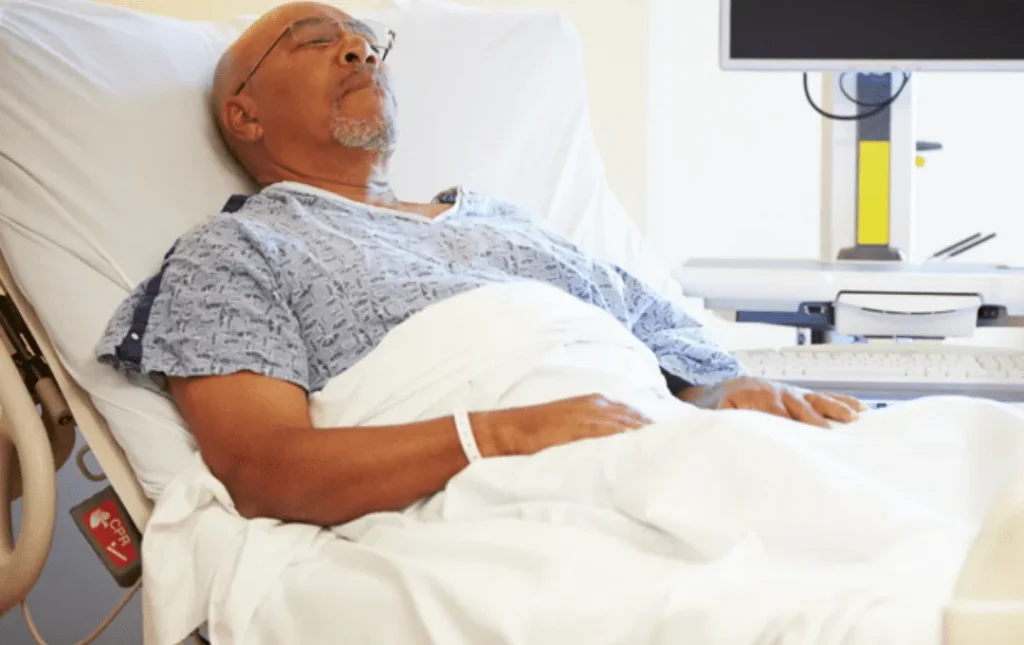Caring for bedridden patients at home can be stressful physically mentally and emotionally but it is a noble humane way of making the end of the life of these patients as comfortable as possible. Every single point described here shall be extra helpful in helping any caretaker be fully ready in handling the needs of bedridden patients at home. At Sukino Healthcare, we do respect the feelings and the health of patients and this is why we want to help you understand how to take care of the bedridden.
Understanding the Needs of Bedridden Patients
Bedsores and Pressure Ulcers Prevention
Patients in bed are precisely prone to develop some sores which are referred to as pressure ulcers. These painful wounds are caused by pressure on the skin for long time, especially on back, hips and heel. Eradicating bedsores it is one of the significant if not the most important task involved in nursing clients who are confined to bed at home. This can easily be prevented by turning the patient every two hours to minimize any probability of pressure ulcers. Moreover, the routine utilization of specialized mattresses and cushions which prevents direct force put weight can also help in preventing some of the pressure points too. Maintaining the skin integrity is also crucial and the skin of the patient must be clean, and free from moisture since it is known to worsen the skin breakdown. Use of barrier creams and routine skin checks for signs of early redness or skin breakdown also can be peformed here.
Nutritional Needs and Hydration
Bedridden patients must consume the recommended quantity and type of food and must drink water regularly to maintain their good health. They need proper nutrition to supply strength to their bodies, to prevent muscle wastage and also for recovery of any injuries or diseases. The network of a healthcare provider or a dietitian should be sought to come up with a diet based on the patient’s needs. The patient may require modified diet such as soft or pureed foods if he or she experiences swallowing issues. Also, there should always be an arrangement made to provide fluids in order to avoid urinary tract infection and constipation, some of the complications, which are often associated with bedridden patients. Encouraging small, frequent sips of water throughout the day can help maintain hydration levels without overwhelming the patient.
Emotional and Mental Well-being
Maintaining Social Connections
It is depressing and anxiety to be bed-ridden and being isolated is even worse. They must stay in touch with people to avoid ‘getting lost in their thoughts’ which is dangerous for depression sufferers. Inform family and friends to come often or use technology to make frequent video calls possible. Using verbal communication is also another way of reducing the feeling of loneliness, this includes talking to the patient, reciting to him/her, or even watching his/her favourite program. If the patient was taking part in such activities before the illness struck, attempt at making them more suitable for the present situation. For example, if they like drawing ask them to set up a small table beside the bed and give them small brushes and paints. Calmness that can come out from family members can help immensely in improving the quality of life in bedridden patients.
Providing Mental Stimulation
Another aspect for bedridden patients at home is the need to engage their brain as they languish most of the day in bed. Stimulating activities will also help counter what the disease would otherwise do to the patient such as causing the patient to lose their mind and become depressed. Even basic things like playing puzzles, memory games or talking about events which occurred in the day will in some way activate their brain cells. Audiobooks and podcast are also very appropriate, especially to patients who find it hard to read. It has also been demonstrated that the melodies of music therapy provide therapeutic values, helping the decrease, stress and anxiety levels. These activities should be in line with the patient’s likes and such that do not drain the patient’s cognitive capacity to enable patience during the treatment.
Personal Hygiene and Comfort
Bathing and Grooming
Personal hygiene needs to be always kept clean, especially mobility disabled patients who are often bedridden, this is for their health, hygiene and self-esteem. Hygiene care includes giving bed baths, sponge baths that would enhance prevention of infections relating to skin health. Soaps should be gentle without causing irritation to the skin and the water should be warm. Other non-medical needs that can be provided to a patient in a healthcare facility include grooming services such as hair brushing, nail clipping and oral hygiene will also help improve their morale. It is also relevant to pay much attention to the cleanliness and fresh state of the bedding of the patient. This means constant washing of clothes and changing of bed sheets so as to avert on the bad smells and make the patient comfortable.
Managing Incontinence
Bedridden patients experience incontinence and this is a significant challenge in nursing since it may lead to formation of pressure sores and infections. Making the use of high quality adult diapers, absorbent pads and moisture barriers can go along ways in dry the patient and keep him comfortable. Such products should however be regularly checked or changed to prevent their constant exposure to moisture. In some instances, the doctors may advice use of a urinary catheter to enhance the capacity of managing incontinence. It is also important to focus on proper skin care where the patients skin needs to be washed and dried well after soiling from incontinence to avoid further skin breakdown and possible infections.
Physical Care and Mobility
Physical Therapy and Exercises
Bedridden patients are least active, but mobility is not totally restricted, and this is why physical therapy and easily achievable exercises have to be conducted on a normal basis to avoid muscle wastage and increased incidences of pressure sores, improved blood flow and better health all over. Active exercises, such as sliding, brushing or having the patient move his or her arms and legs as far as is comfortable, can be carried out on a daily basis with an aim of improving joint flexibility and muscle strength among the patients. There is always an advantage of getting a physical therapist to design an exercise regime for the patient based on his or her requirements and capabilities. Still, passive movements, in which the caregiver manually mobilises the patient’s limbs, may also be useful in this respect. The patient should be encouraged to engage in these exercises to the maximum as it will help him or her develop a better mood and self-sufficiency.
Positioning and Repositioning
Appropriate positioning and repositioning should be done from time-to-time to avoid other complications such as bed sores, respiratory problems, muscle contractures among others. Evaluating the patient every two hours to change his position minimizes pressure on any part of the body hence reducing bed sore outbreaks. Another method of reducing pressure on such areas is by placing pillows or foam wedges under the patient to help him/her relax comfortably on the bed. A recline of the head of the bed may improve breathing and decrease the chances of aspiration, when lying flat after a meal. One has to equally ensure that the patient is relaxed, comfortable and a proper body posturing is employed in order not to cause stress on the joints.
Medication Management and Pain Control
Organizing Medications
Patients who stay in bed are normally on different prescriptions, and handling them is not a very easy thing. Medication has to be administered in a timely manner and dosage depends on the type of drug – it means that medicines have to be arranged properly. Failure to adhere to the schedule can be prevented by special equipment like an organizer for pills or timely alarm signals. It is also important to have an up to date list of all the medications, dosages for each and the frequency of administration in order to facilitate with the physicians. Moreover, it can also help in evaluating response to medications and effects related to each potential Side Effect and the interaction between them. The patient should be able to involve his or her health care team in order to improve the quality and safety of their medication regime.
Pain Management
Pain control remains an essential aspect when attending to the needs of bedridden patients in homes. This can lead to patient’s disability and therefore proper management of chronic pain is vital. Since pain management could be in the form of drugs, physiotherapy and other complementary therapies including heat lamp or massage among others. Pain should also be measured frequently with attention being paid to the kind of treatment that the patient deserves. There may be other signs like frowning, squirming or other signs of discomfort, despair, or change of activity that may reveal that the patient is still in pain, usually where the patient is unable to verbalize their pain. It is always beneficial to find pain management solutions with the healthcare provider that can significantly enhance the patient’s comfort and quality of life.
Caregiver Support and Self-Care
Providing Support for Caregivers
Staying with a bedridden patient can be a rather stressful experience both for a patient and for a caregiver. This points to the need for caregivers to embrace support and resources so as to be well equipped in handling the needs arising out of caregiving. Online Support groups are also important as they give one the opportunity, to share their experiences, seek advice and even emotional support from fellow affected people. Other sources that can help you to gain the necessary knowledge and skills include the training programs for caregivers. Also, respite care services are viable when a caregiver requires a break and have no time to attend to the recipient’s needs. Communication with other family members and healthcare professionals must be fostered so that the load of caring for the patient can be evenly distributed, and the caregiver is not overlooked or neglected.
Self-Care for Caregivers
Caring for a bedridden patient is a very demanding task and requires most of a caregiver’s time, thus they can easily forget to take care of themselves. However self-care is very important in order to maintain the required stamina in order to offer quality care. It is important that caregivers take time in doing some exercise, eating healthy foods and get enough sleep. It is crucial to attend to the well-being, have the chance to do activities that are enjoyable and help with relaxation so that burnout is avoided. The concept of caregiver stress is also very evident wherein one should look for any signs of stress like irritability, fatigue or feeling overwhelmed etc. Caring for the self helps avoid caregiver burnout, which is vital for continued quality care of the patients.
Conclusion
Taking care of bedridden patients at home requires a comprehensive approach that addresses their physical, emotional, and psychological needs. By focusing on prevention, proper nutrition, emotional support, hygiene, mobility, medication management, and caregiver support, you can ensure a better quality of life for your loved one. At Sukino Healthcare, we believe in empowering caregivers with the knowledge and resources necessary for the care of bedridden patients at home. Remember, the care of bedridden patients at home is not just about meeting their physical needs but also about providing emotional and mental support, ensuring they feel valued, loved, and respected.
We are India’s first comprehensive continuum care provider. We provide multidisciplinary out of hospital care to acute and post-acute and chronically ill patients at our critical care facilities and your home.


